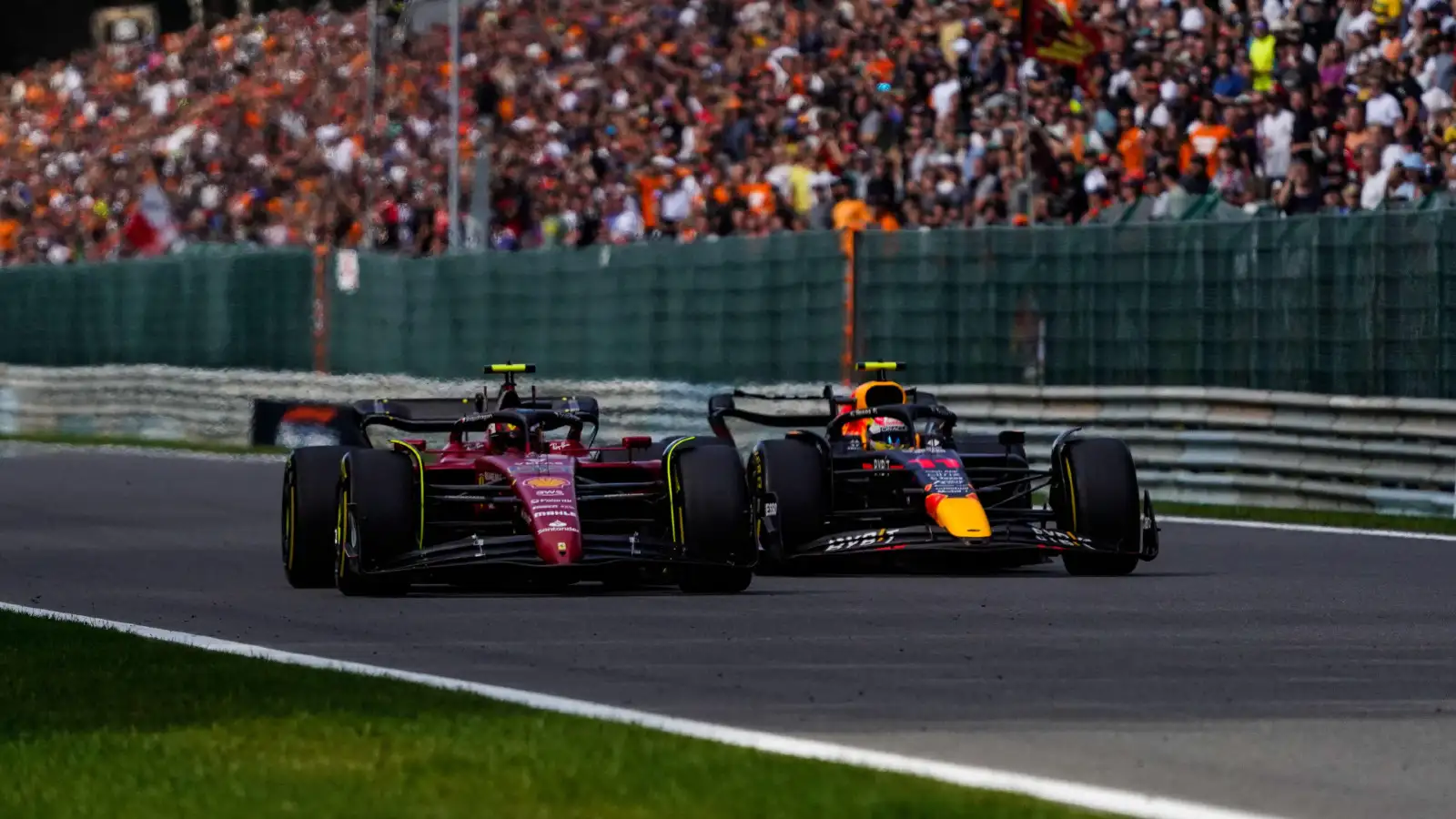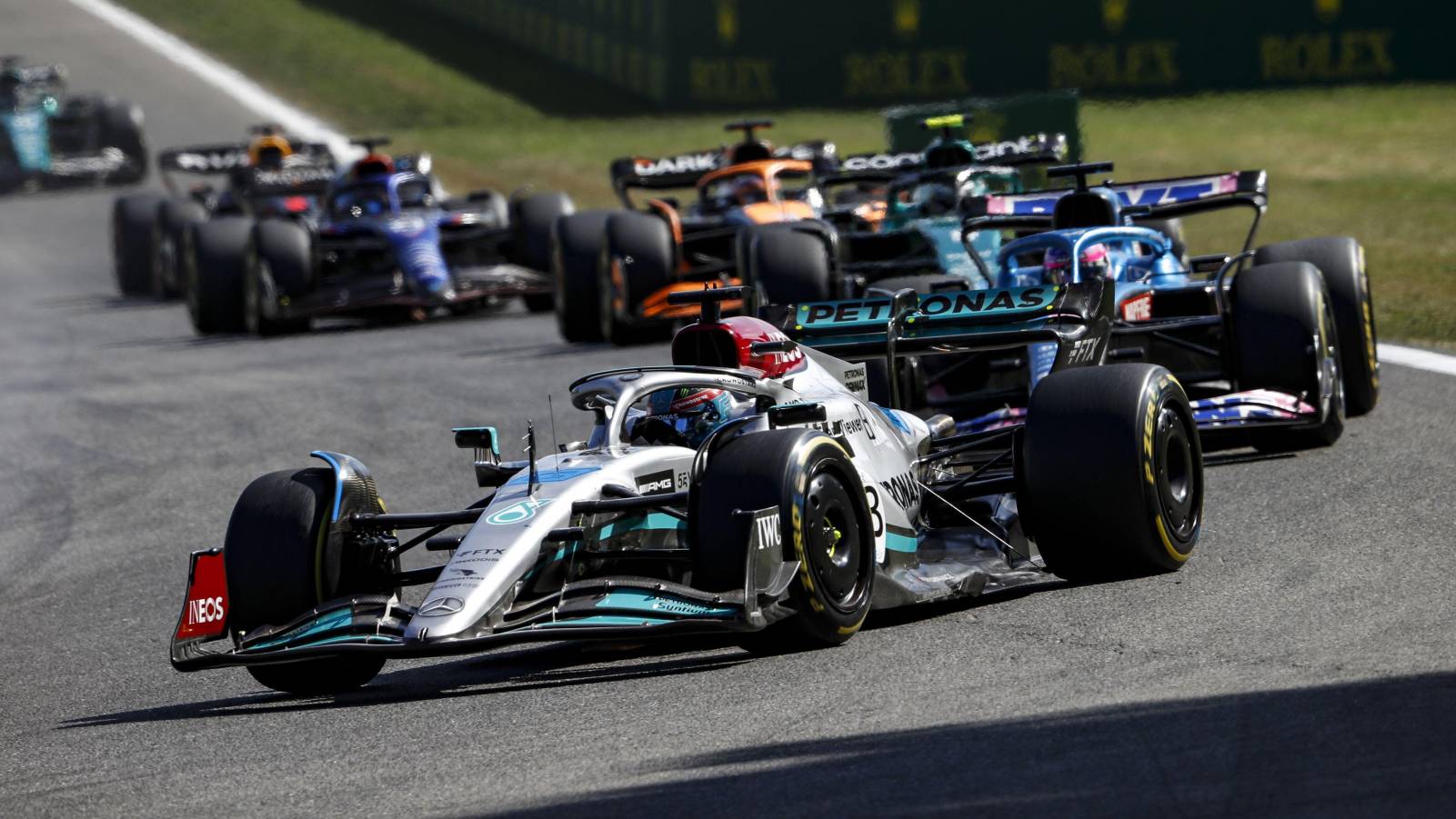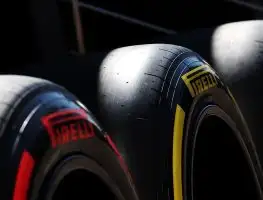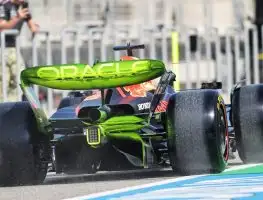FIA outline safety concerns that triggered porpoising rule change

Ferrari's Carlos Sainz & Red Bull's Max Verstappen race at Spa-Francorchamps, August 2022.
The FIA’s Nikolas Tombazis has outlined why the governing body began enforcing Technical Directive 039 at the Belgian Grand Prix.
The weekend at Spa-Francorchamps was the first weekend that saw the FIA begin the enforcement of Technical Directive 039, which had beenoutlined at the Canadian Grand Prixin June.
The directive saw the FIA come up with a solution to measure a car’s vertical acceleration, which would allow for a measurement of the vertical oscillations encountered by a driver as a car ‘porpoised’ along the track. Teams would then have to adjust their car setups if their cars were outside the accepted range for these oscillations.
Due to the requirement of a precise measurement system and mathematical formula to aid in enforcing the Directive, the governing body only began enforcement at last weekend’s Belgian Grand Prix.
Speaking during theFIA’s Saturday press conference, the governing body’s head of single-seater matters Nikolas Tombazis outlined the reasons for the introduction of the Technical Directive.
“Obviously there’s been a lot of discussion about this topic,” he said.
“We had concerns about the safety and about the long-term effects of porpoising which is why we felt compelled to make some amendments. And it has to be said, safety is one of the topics that fall squarely into the FIA’s prerogative because it cannot be clouded by competitive positions and so on.”

Nikolas Tombazis: The teams only care about their competitive position
Tombazis explained that teams were unlikely to address the issue themselves, given that steps to reduce porpoising would likely have a negative result on their performance. As a result, the teams would have to be forced into the position of rectifying it.
“I’ve been on the other side of the fence when you are in a team and the only thing you worry about there – I mean, obviously you care about safety – but the only thing you worry about is your competitive position,” he said.
“The championship fight is so intense that always, that prevails, and that’s why it cannot be falling into the normal process, in order to introduce changes.
“So this TD, and some minor rule changes, introduced for Spa effectively introduce the measurement of the porpoising and a stiffer underside of the car, in order to have parity across the grid. And then there’s been some… following a lot of negotiations and even the President [Mohammed Ben Sulayem] got involved very closely to this topic and discussed it with all the teams, all the drivers and we’ve made some compromises and some amendments also for next year.”
‘The FIA had to act early due to stable regulations’
The first few races of 2022, the first under the new ground-effect regulations, saw the aerodynamic phenomenon of porpoising affect almost all of the teams to varying degrees. WhileRed Bull’sRB18 has been quite smooth all season,Ferrari’sF1-75 andMercedes’W13 had noticeably harsher rides.
Since then, both have improved dramatically, although the long Kemmel Straight at Spa showed both were still encountering it to a greater extent than the Red Bull.
近日披露,马已经发生了一些变化de to the 2023 Technical Regulations to rectify porpoising. These include raising the floor edges by 15mm, raising the diffuser through height, and increasing the stiffness of the diffuser edge.
意料之中的是,鉴于RB18没有’t struggled with porpoising, it’s ledChristian HornerandMax Verstappen to say the changes aren’t needed, and Tombazis addressed that position as he spoke to media.
“There were even some examples of porpoising yesterday (Friday),” he said.
“We see that, generally speaking, with an increase of performance, there’s also a tendency to increase that phenomenon, while at the same time teams are learning more about it and they can control it better.
“Now, we have to act responsibly in the sport. We see examples of other sports that have ignored the long-term effects of certain conditions they subject the sportsmen under, so we felt we had to take the long-term view on this. And we felt it was… These regulations will continue until 2025, inclusive before we go to new regulations for ’26.
“We felt it was better to act early than to be here discussing the same thing again in one year’s time and so on. So, it was the combination of all of these factors, plus, of course, we did compromise, as I said, earlier.
“The President got heavily involved in all of this compromise and therefore I think we came up with the right solution in the end. But we’ve got no doubt that some people on one side of the argument would say it was too much, and other people will say to us too little. That’s normal.”






